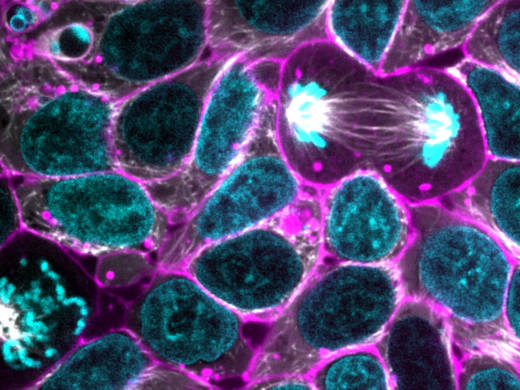A nonprofit research group is giving scientists a new way to study the secret lives of human cells.
On Wednesday, the Allen Institute for Cell Science provided access to a collection of living stem cells that have been genetically altered to make internal structures like the nucleus and mitochondria glow.
"What makes these cells special is that they are normal, healthy cells that we can spy on and see what the cell does when it's left alone," says Susanne Rafelski, director of assay development at the institute. Under a microscope, "they are a wonder to behold," she says.
The cells originally came from skin. But they have the potential to become many different types of cells, including those found in the heart and brain.
And they could help scientists answer basic questions about how cells specialize as they develop, how disease changes a cell and how experimental drugs affect certain types of cells.

9(MDAxOTAwOTE4MDEyMTkxMDAzNjczZDljZA004))
